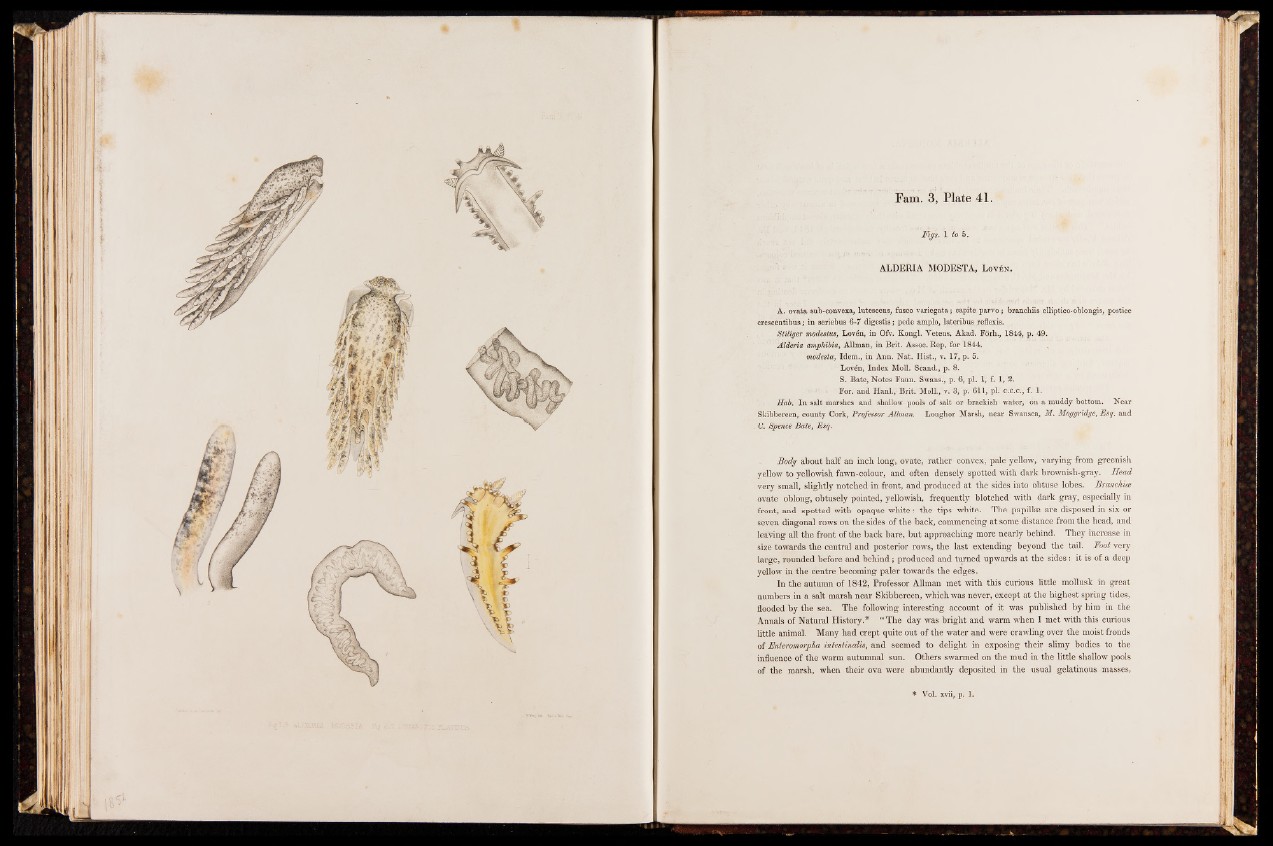
Figs. 1 to 5.
AEDERIA MODESTA, Lov£n.
A. ovata sub-convexa, lutescens, fusco variegata; capite parvo; branchiis elliptico-oblongis, postice
crescentibus; in seriebus 6-7 digestis; pede amplo, lateribus reflexis.
Stiliger modestus, Loven, in OfV. Kongl. Yetens. Akad. Forh., 1844, p. 49.
Alderia amphibia, Allman, in Brit. Assoc. Rep. for 1844.
modesta, Idem., in Ann. Nat. Hist., v. 17, p. 5.
Loven, Index Moll. Scand., p. 8.
S. Bate, Notes Faun. Swans., p. 6, pi. 1, f. 1, 2.
For. and Haul., Brit. Moll., v. 3, p. 611, plv c.c.c., f. 1.
Hab. In salt marshes and shallow pools of salt or brackish water, on a muddy bottom. Near
Skibbereen, county Cork, Professor Allman. Loughor Marsh, near Swansea, M. Moggridge, Esq. and
C. Spence Bate, Esq.
Body about half an inch long, ovate, rather convex, pale yellow, varying from greenish
yellow to yellowish fawn-colour, and often densely spotted with dark brownish-gray. Head
very small, slightly notched in front, and produced at the sides into obtuse lobes. Branchite
ovate oblong, obtusely pointed, yellowish, frequently blotched with dark gray, especially in
front, and spotted with opaque white: the tips white. The papillae are disposed in six or
seven diagonal rows on the sides of the back, commencing at some distance from the head, and
leaving all the front of the back bare, but approaching more nearly behind. They increase in
size towards the central and posterior rows, the last extending beyond the tail. Foot very
large, rounded before and behind; produced and turned upwards at the sides: it is of a deep
yellow in the centre becoming paler towards the edges.
In the autumn of 1842, Professor Allman met with this curious little mollusk in great
numbers in a salt marsh near Skibbereen, which was never, except at the highest spring tides,
flooded by the sea. The following interesting account of it was published by him in the
Annals of Natural History.* “ The day was bright and warm when I met with this curious
little animal. Many had crept quite out of the water and were crawling over the moist fronds
of Enteromorpha intestinalis, and seemed to delight in exposing their slimy bodies to the
influence of the warm autumnal sun. Others swarmed on the mud in the little shallow pools
of the marsh, when their ova were abundantly deposited in the usual gelatinous masses,
* Vol. xvii, p. 1.